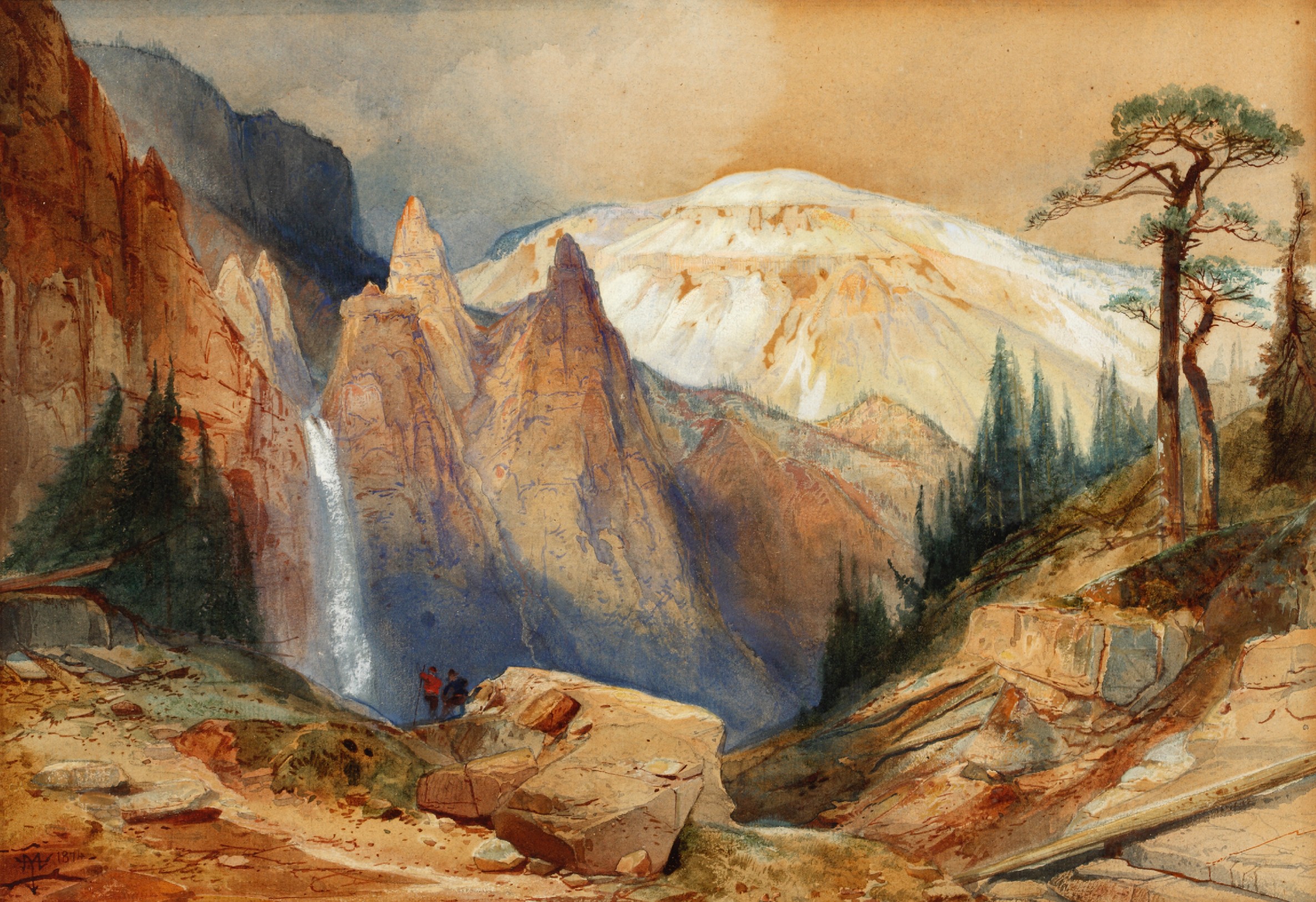Landscape: Tower Falls and Sulphur Mountain, Yellowstone National Park
Now at a time when we find ourselves stuck, both literally in our homes and figuratively in a mental state of uncertainty, due to the COVID-19 pandemic, many of us are looking for easy escapes to transport us away from our homes and from the frightening, overwhelming news we are facing on a daily basis.
Beautiful works of art, particularly landscape paintings like Thomas Moran’s stunning Tower Falls and Sulphur Mountain, Yellowstone National Park, have the ability to take us on a journey to somewhere new.
[embedyt] https://www.youtube.com/watch?v=9T56fMaQflA[/embedyt]
In 1871, Thomas Moran accompanied geologist Dr Ferdinand V. Hayden, who led the 1871 U.S. Geological Survey into the Yellowstone region that became the country’s first national park a year later, and was drawn to the striking rugged terrain.
While on the expedition, Moran made quick field sketches and took photographs, giving him accurate records of each site. After returning to his studio, Moran referenced these materials to create fifteen finished watercolors, one being Tower Falls and Sulphur Mountain, Yellowstone National Park, as the later 1874 dates attests.
In this painting, Moran positions himself behind the two tiny hikers who are resting amongst the rugged terrain and enjoying the sublime scene before them. Seen on the left, Sulphur Falls plunges 132 feet to the creek bed below. The tower-like masses of breccias framing the falls are uniquely shaped, eroded over time into strange formations resembling gothic spires, and the wide white dome of Sulphur Mountain dominates the background. With a color palette directly mimicking his experience with the color and light conditions, Moran accurately portrays the topographical aspects and captures the breathtaking natural wonder, making viewers feel as if they are standing before this glorious scene.
Moran’s fifteen watercolors constituted a forty-five-page portfolio that was reproduced in 1876 as chromolithographs by the Boston lithographic firm Louis Prang & Company for publication in The Yellowstone National Park and the Mountain Regions of Portions of Idaho, Nevada, Colorado and Utah. These high-quality chromolithographs were the first color images to be printed of the first national park, and the portfolio brought images of the American west to people of the rest of the country, garnering a new public appreciation for the region.
Moran’s excursion in 1871 was the first of the artists’ many sketching trips to the western territories of the United States, which earned him his reputation as a preeminent landscape painter. He traveled extensively throughout his lifetime and exhibited regularly at the Pennsylvania Academy of the Fine Arts in Philadelphia and at the National Academy of Design in New York, where he became a full academician in 1884. After a prolific career, Moran died at the age of eighty-nine in Santa Barbara, California in 1926.
Bibliography:
1. Jones, Barbara L. “Thomas Moran (1837–1926), Tower Falls and Sulphur Mountain, Yellowstone National Park, 1874.” Picturing America: Signature Works from the Westmoreland Museum of American Art, Barbara L. Jones et al. (Greensburg, PA: Westmoreland Museum of American Art, 2010), 81-82.
